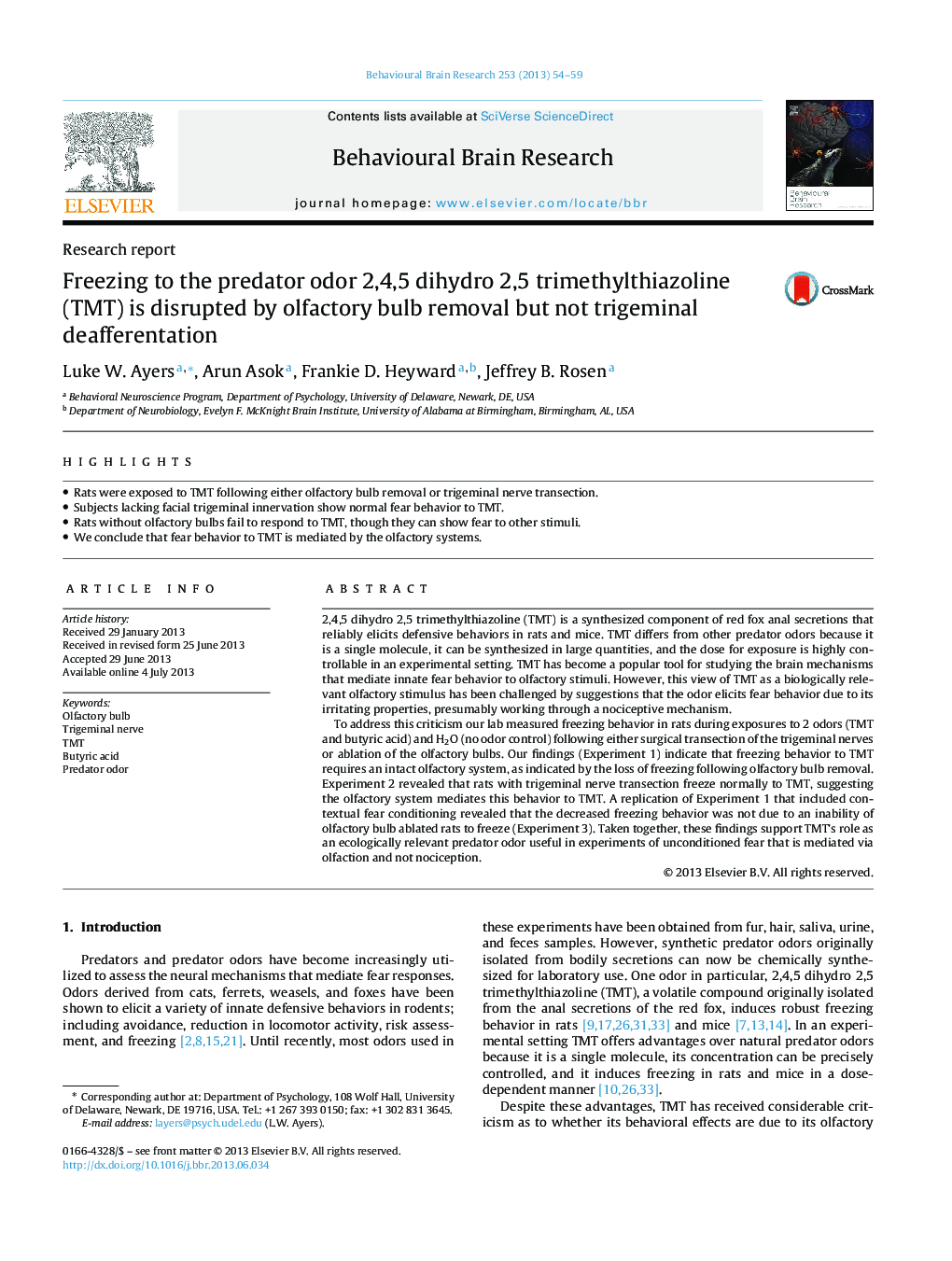| کد مقاله | کد نشریه | سال انتشار | مقاله انگلیسی | نسخه تمام متن |
|---|---|---|---|---|
| 6258638 | 1612979 | 2013 | 6 صفحه PDF | دانلود رایگان |

- Rats were exposed to TMT following either olfactory bulb removal or trigeminal nerve transection.
- Subjects lacking facial trigeminal innervation show normal fear behavior to TMT.
- Rats without olfactory bulbs fail to respond to TMT, though they can show fear to other stimuli.
- We conclude that fear behavior to TMT is mediated by the olfactory systems.
2,4,5 dihydro 2,5 trimethylthiazoline (TMT) is a synthesized component of red fox anal secretions that reliably elicits defensive behaviors in rats and mice. TMT differs from other predator odors because it is a single molecule, it can be synthesized in large quantities, and the dose for exposure is highly controllable in an experimental setting. TMT has become a popular tool for studying the brain mechanisms that mediate innate fear behavior to olfactory stimuli. However, this view of TMT as a biologically relevant olfactory stimulus has been challenged by suggestions that the odor elicits fear behavior due to its irritating properties, presumably working through a nociceptive mechanism.To address this criticism our lab measured freezing behavior in rats during exposures to 2 odors (TMT and butyric acid) and H2O (no odor control) following either surgical transection of the trigeminal nerves or ablation of the olfactory bulbs. Our findings (Experiment 1) indicate that freezing behavior to TMT requires an intact olfactory system, as indicated by the loss of freezing following olfactory bulb removal. Experiment 2 revealed that rats with trigeminal nerve transection freeze normally to TMT, suggesting the olfactory system mediates this behavior to TMT. A replication of Experiment 1 that included contextual fear conditioning revealed that the decreased freezing behavior was not due to an inability of olfactory bulb ablated rats to freeze (Experiment 3). Taken together, these findings support TMT's role as an ecologically relevant predator odor useful in experiments of unconditioned fear that is mediated via olfaction and not nociception.
Journal: Behavioural Brain Research - Volume 253, 15 September 2013, Pages 54-59